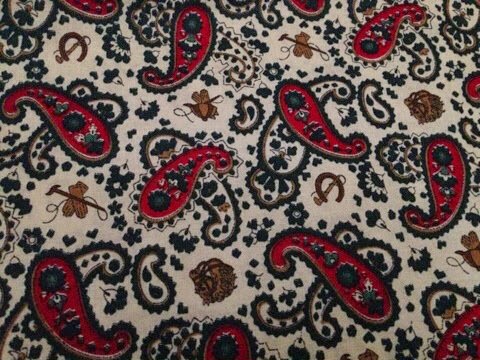Awesome!!!
But would it work with fur?
The satin/silk she worked with made it easier to create channels that you could pull a ribbon through. So my brainstorming session was reactivated.
A plan was devised!!!
Muahhhh hahhahahahahaha (maniacal laugh for those who weren't sure what was going on)...
Materials:
1/2 bag polyester fiberfill
1.5 yards cotton or muslin
3/4 - 1 yard faux fur
3 yards ribbon
1 package of double wide bias tape
Bodkin/large safety pin
So I cut out my cotton for the muff base.
 |
29 x 21 inches doubled (cut on fold/ I eventually cut off the folded edge).
So in actuality it was 58 x 42. |
 |
| I wanted a pocket to put my cell phone securely in, so I measured my cell and cut out the corresponding rectangle. |
 |
| Pocket top, not trying to be fancy.... |
 |
| Pinned everything down and sewed it to one side of my lining (lay your muff body on your table how you would hold it- place your pocket- pin corners and stitch). Add a button hole and button. |
 |
Place the two pieces on top of each other with the pocket on the inside. Making sure that when you turn the pieces inside out that the pocket faces/opens in the correct direction.
Sew one side of the 21 inch ends to create a large panel (not pictured).
|
 |
Fold that panel in half (longest length) and sew down the side. Creating a long 56 inch tube. (Above)
|
 |
Turn the tube inside out. Iron
|
 |
| Flip the tube so the pocket is on the inside right side up. |
 |
| My Goodwill find for $1.99. Slowly begin to stuff the tube. I did this layer by layer. 2-3 inches around another 2-3 inches around until I got the desired thickness. Pat and roll the tube to distribute it evenly. |
 |
| Slowly fold in your edges and pin all around top of your tube. Whipstitch this closed. |
 |
| Measuring for the fashion fabric. Or Faux fur in this case. Make sure to add a inch in either direction for seams. |
|
|
|
|
 |
| My Black Faux Fur that has waited patiently for over ten years to be used. My piece ended up being 21x 28. |
 |
Using black bias tape extra wide double fold. I ironed one side semi flat. I still wanted to see crease to stitch in the ditch.
| Pinning every 2 inches or so I sewed the bias tape onto my fabric (both 28 inch sides). Bias tape to fur side of fabric. Make sure to stop the bias tape at least an inch before the fabric end. This will give you room for your final seam and allow you to insert your tightening Ribbon ties into the bias tape channels. |
|
 |
| Turn over -iron. |
 |
| Turn to the inside and pin to the inside of the fur. Securely whipstitch the bias tape to the wrong side of the faux fur. Make sure the ends are nice and strong. |
 |
| Fold fur in half (fur to fur or fashion fabric to fashion fabric) and stitch down the side. Make sure you do not catch the bias tape channels! |
 |
| Tada!! |
 |
Turn inside out and using a large blunt needle/bodkin/safety pin thread your ribbon through the bias tape channel.
I unfortunately did not have any black ribbon so for now I used some brown ribbon that I have loads of!
Go slow and pull gently to work it through the channel. |
 |
| Once finished, gently pull the ribbon to create your finished muff! |
 |
Fin!
I'm in my 19th century underthings but with my 18th century red cape. I know, I know!! But as I started to get dressed I realized most of my mid Victorian wear is very dark and the muff would be hard to see.
In the works I have a matching red flocked velvet cape with black trim.
Sneak peek!!!
But more about that later.... | | | |
|
Hope this helps and its understandable!
P.s. Because of the ease of making this I will eventually make a lavender taffeta version to go with my gown worn at Costume College 2014.
I have a day bodice made up and a white velvet Talma in the brainstorming stage!!



















































